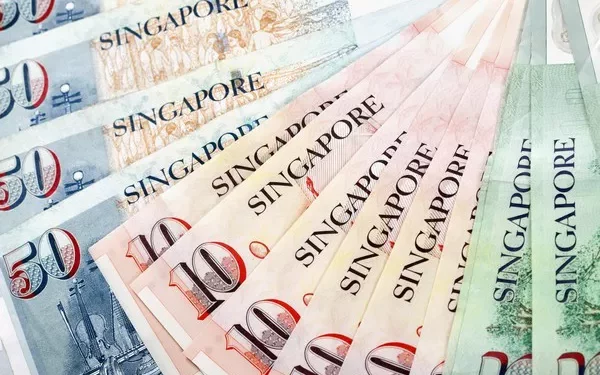Singapore, known for its vibrant economy and stable financial system, boasts a currency that reflects its rich history and progressive outlook. The Singapore dollar (SGD), symbolized by the abbreviation S$, is the official currency of the Republic of Singapore. Beyond its economic utility, the SGD carries cultural and historical significance, evident even in its design and the signatures that grace its banknotes.
History and Evolution of the Singapore Dollar
The journey of the Singapore dollar began in the early 19th century when various currencies circulated in the region, reflecting its status as a British colony. However, it was only in 1967 that the modern Singapore dollar was introduced, following Singapore’s separation from Malaysia. The Monetary Authority of Singapore (MAS) became the sole issuer of currency, marking a pivotal moment in the nation’s economic independence.
The early SGD banknotes featured prominent national symbols and landmarks, emphasizing Singapore’s identity as a young nation striving for economic stability and growth. Over the decades, the design and security features of the currency evolved to combat counterfeiting and meet the demands of a globalized economy.
The Design and Security Features of the Singapore Dollar
Each denomination of the SGD is meticulously designed, incorporating elements that celebrate Singapore’s heritage and progress. From the iconic Merlion to scenes of urban development, the banknotes tell a story of resilience and innovation. Advanced security features such as holographic strips, microprinting, and color-changing inks ensure the SGD remains a trusted currency both domestically and internationally.
Signatories of the Singapore Dollar Banknotes
One of the unique aspects of the Singapore dollar banknotes is the inclusion of signatures. Unlike many other currencies where the signatures are typically those of central bank officials or finance ministers, Singapore has a tradition of featuring the signatures of prominent figures who have contributed significantly to the nation’s development.
Notable Signatories Throughout History
Goh Keng Swee – A pivotal figure in Singapore’s economic transformation, Goh Keng Swee served as the country’s Deputy Prime Minister and Finance Minister. His signature on the early series of Singapore dollar banknotes symbolizes Singapore’s journey towards economic stability and industrialization.
Lee Kuan Yew – Founding Prime Minister of Singapore, Lee Kuan Yew’s vision and leadership were instrumental in shaping Singapore’s development from a fledgling nation to a global financial hub. His signature on the SGD banknotes underscores his enduring legacy in nation-building.
Yusof bin Ishak – The first President of Singapore, Yusof bin Ishak’s tenure (1965-1970) saw the establishment of the modern Singaporean state. His signature on the banknotes symbolizes Singapore’s emergence as an independent nation and its commitment to multiracial harmony.
Evolution of Signatures on the SGD
As Singapore progressed economically and politically, the signatures on its currency evolved to reflect changing leadership and strategic priorities. The transition from the pioneering leaders of the 1960s to the present-day officials of the Monetary Authority of Singapore illustrates continuity in economic stewardship and financial governance.
The Role of the Monetary Authority of Singapore (MAS)
The MAS plays a crucial role in managing Singapore’s monetary policy and issuing its currency. Established in 1971, the MAS has maintained price stability and financial resilience, safeguarding the SGD’s value amidst global economic fluctuations. The signatures of MAS officials on SGD banknotes symbolize the authority’s commitment to sound economic management and fiscal prudence.
Cultural and Symbolic Significance
Beyond its economic function, the Singapore dollar holds cultural and symbolic significance for Singaporeans. The inclusion of national icons, historical figures, and landmarks on the banknotes fosters a sense of identity and pride among citizens. The circulation of SGD banknotes featuring diverse ethnic groups and cultural celebrations reinforces Singapore’s multicultural fabric.
See Also: Why Singapore Exchange Rate is High?
Design Innovations and Technological Advancements
In recent years, the MAS has embraced design innovations and technological advancements to enhance the security and aesthetic appeal of SGD banknotes. Collaboration with international artists and designers has resulted in visually striking currency designs that reflect Singapore’s creativity and global outlook.
Commemorative and Limited-Edition Banknotes
Occasionally, the MAS issues commemorative and limited-edition SGD banknotes to mark significant national milestones or cultural events. These special editions often feature unique designs and security features, making them highly sought after by collectors and enthusiasts alike.
Future Prospects and Challenges
Looking ahead, the Singapore dollar faces new challenges in an increasingly digital and interconnected world. The rise of digital currencies and fintech innovations may reshape the landscape of global finance, prompting Singapore to adapt and innovate. The MAS remains committed to ensuring the SGD remains a stable and reliable currency, adaptable to the demands of a dynamic global economy.
Conclusion
The Singapore dollar is not merely a medium of exchange but a reflection of Singapore’s journey as a nation. From its historical roots to its modern-day resilience, the SGD embodies the spirit of innovation, multiculturalism, and economic prosperity. The signatures that adorn its banknotes serve as a reminder of the leaders and institutions that have shaped Singapore’s path to success. As Singapore continues to evolve, so too will its currency, ensuring that the Singapore dollar remains a symbol of strength and stability in the global financial landscape.
Related Topics:


























